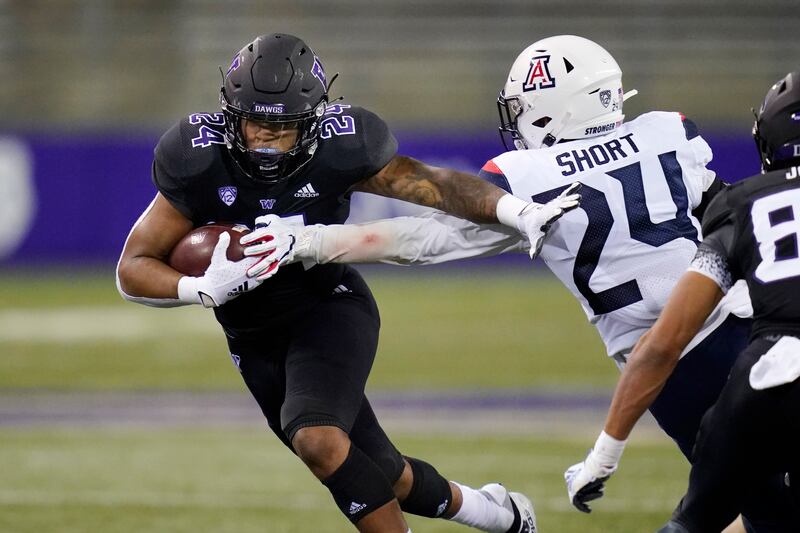The longer the college football season goes on, the weirder things seem to get, and Week 12 was something else.
Game cancellations grew to a season-high, 19 in total. Michigan defeated Rutgers and it felt like an upset. The girlfriend of a Temple player tested positive for COVID-19, which somehow forced the Owls to play their fifth-string quarterback. Oh yeah, independent Liberty, the undefeated powerhouse they were, finally lost a game against a Power Five opponent.
It’s been weird, to say the least. So here are six takeaways from the BYU and Utah games, Pac-12 and Mountain West action and more.
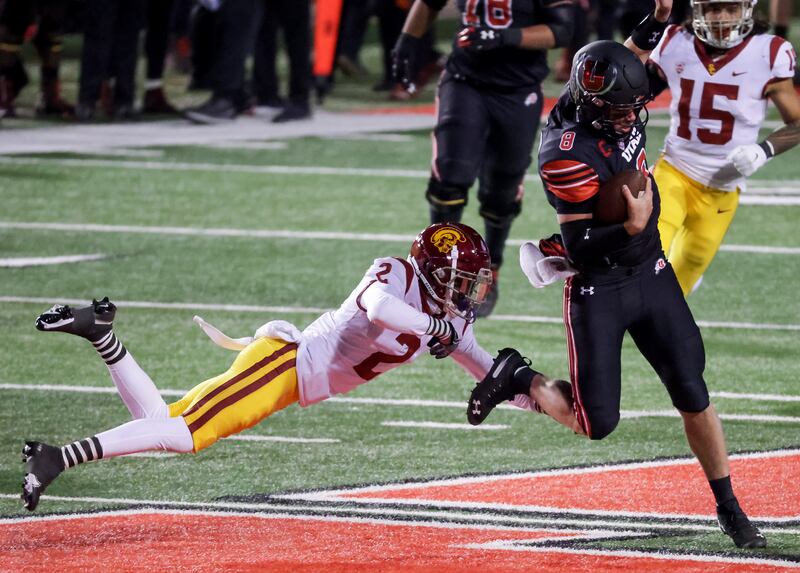
Utah played a game. Might be best to leave it at that
The Utes finally played a college football game Saturday, after weeks and weeks and weeks of standing on the proverbial sideline watching and waiting.
That is a major takeaway and a victory in and of itself. Amidst a global pandemic, college football was played up on the hill, at long last.
Every FBS program in the state of Utah has now played a football game in 2020. In April or May, even July, that would have sounded absurd and many would have believed it to be a near impossibility. But it happened. People saw it. Most of it at least, save for a couple of punts late in the third quarter.
As expected, it wasn’t a very pretty season debut for the Utes. Utah lost to USC 33-17, in an injury and turnover-marred contest.
What takeaways are there for Utah? There are quite a few. Quarterback play is a concern. Offensive line play, too. The constant shuffle of playmakers in and out of the lineup on offense was strange (perhaps compelled by poor fitness levels, with COVID-19 a possible cause).
Defensively, the Utes were fine. Nephi Sewell was great. Coverage was at times too soft and pressure on the quarterback too inconsistent, but Utah was fairly stout against the run.
Sweeping declarations could be made about how Utah isn’t a contender for even the Pac-12 South title (they might not be), or how the Utes could be the worst team in the division right now (Arizona is probably worse, but who really knows).
For a night at least, those takeaways can wait. Utah played football Saturday and let’s leave it at that.
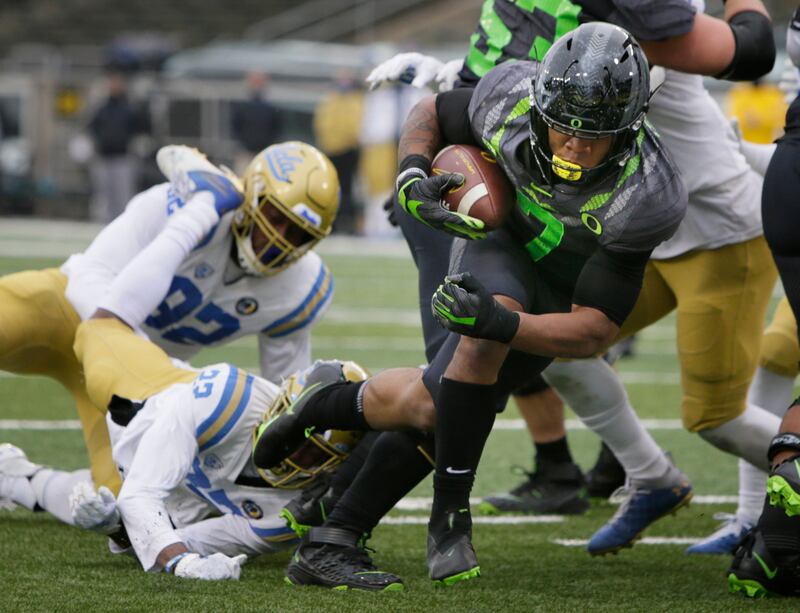
Does the Pac-12 have an elite team? A shot at the CFP?
While Saturday might have been Utah’s season opener, the rest of the Pac-12 has been going for three weeks now. After the latest action, some things are starting to become a little more clear, emphasis on a little.
For one, tiers have started to emerge, with Oregon, Washington, USC and maybe Colorado standing at the top of the conference.
All four are undefeated, though each got there in their own fashion. Oregon has survived, week after week after week and the same can be said for USC, though the Trojans defeated the Utes soundly enough. Washington was tested by Oregon State, but completely dominated Arizona and Colorado has somehow managed to eke out victories in a pair of shootouts.
Through three weeks, no Pac-12 team has looked invincible, though, or even better than all the rest.
How does that affect the Pac-12’s College Football Playoff aspirations? It isn’t great. The conference needed to get away from its regular parity and have two to three elite teams use the rest of the conference as fodder. That way, come conference championship time, the winner of the conference title could lay claim to an impressive win or two, all for the benefit of the CFP committee.
There is still time. Oregon and Washington don’t play each other until Dec. 12 and both could be undefeated heading into that game. If USC runs the table — the Trojans play Colorado next week — that would set up a Pac-12 title game between unbeatens.
The winner of that game could make it into the CFP. The Big 12 is down this year, a window for the Pac-12 has been opened. The lack of any dominant or elite teams at this point doesn’t bode well for the conference’s postseason future, though.
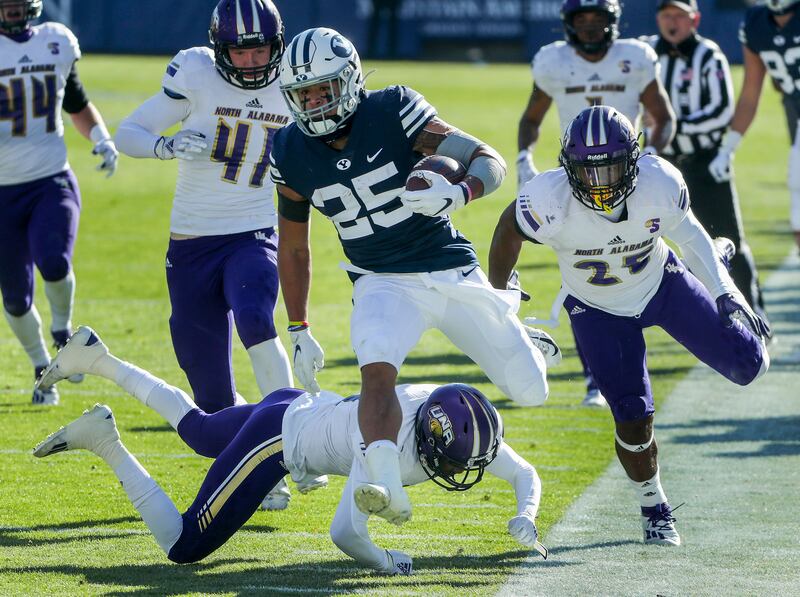
Wouldn’t it have been fun had BYU played anyone else?
Let’s get some things out of the way.
BYU was always going to play North Alabama. The Lions were one of only two teams from the Cougars’ original 2020 schedule that remained an option to play this season (for a long time they were the only ones).
When BYU’s season appeared in jeopardy this summer, as conference’s postponed play or committed to conference-only schedules, North Alabama was an opponent the Cougars could and did rely on.
Throw in the money that would have been required to cancel the game, on short notice no less, the additional cost of going to play somewhere else, and the fact that BYU’s athletic department is looking at a $20 million shortfall, and there was never a chance BYU wouldn’t play North Alabama this weekend.
So play they did and BYU was as dominant as expected, winning 66-14. Takeaways from the game can be found here, or here and even here.
Simply put, BYU remains a great team. Given the way the Cougars beat down the overmatched Lions, though, it would have been nice to see them play someone else Saturday.
There were options available, and given the bye weeks ahead, those teams and their peers may be possibilities for the Cougars going forward, if COVID-19 cancellations continue to rise the way they have.
Mountain West programs like Wyoming, Colorado State and San Jose State were free this weekend, after their scheduled opponents were forced to cancel. The Cowboys desperately hunted for an opponent, but came up empty. The Spartans, meanwhile, missed out on their rivalry game with the Bulldogs, in the midst of their best season in recent memory (sound familiar, Cougar fans?).
MWC games will likely continue to be canceled going forward — COVID-19 isn’t exactly going away — as could some Pac-12 games. Given the requirements set by the Pac-12 to play nonconference opponents this season, though, the best chance for BYU to pick up additional games seems to be their former conference.
In theory, games against Cincinnati, Marshall or Liberty are options too, maybe even games against other Power Five conference teams, but let’s be honest, given the state of the pandemic across the nation at the moment, the best and likely only options for the BYU are MWC teams.
And wouldn’t it have been more fun to see one of those games Saturday?
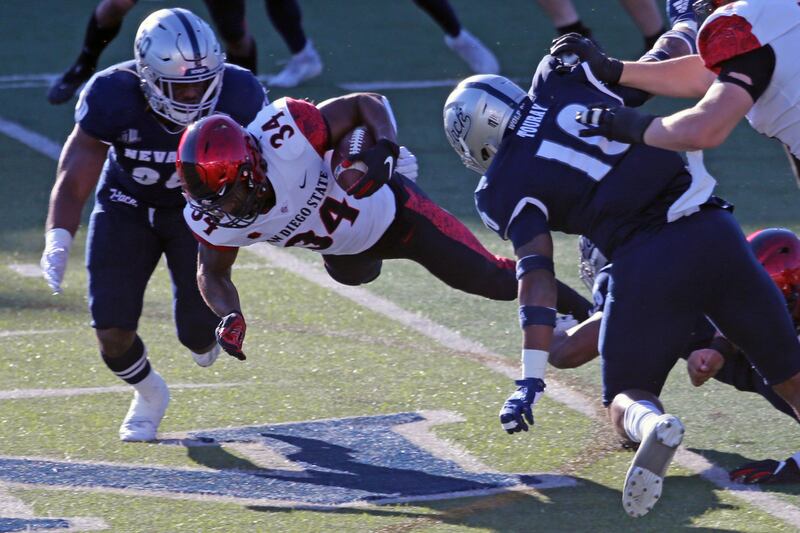
San Diego State is not helping BYU’s cause, but Boise State is
Speaking of future BYU opponents, the last official one — San Diego State — lost again Saturday. The Aztecs fell to undefeated Nevada in a tight one, 26-21, and are now 3-2 on the year.
SDSU’s losses aren’t bad. San Jose State and Nevada are the only unbeaten teams left in the MWC, but every loss by the Aztecs lessens the importance of their Dec. 12 tilt with BYU.
With games against Fresno State and Colorado State over the next couple of weeks, SDSU conceivably could be 3-4 when they take on BYU, although 4-3 with a loss to FSU is more likely, and 5-2 a possibility.
Any way it is sliced, that is a far cry from the team most assumed the Aztecs would be this season, when they were projected to be one of the best two teams in the MWC.
On the other hand, BYU’s road win at Boise State looks better and better by the week, even with all the caveats thrown out there about the state of the BSU team that BYU played.
The Broncos went to Hawaii and took care of business late Saturday night, and at 4-1 with games remaining against SJSU, UNLV and Wyoming, could realistically finish the regular season 7-1.
That success would almost certainly lead to a Top 25 ranking, a turn of events BYU fans should be hoping for. Desperately.
How have the rest of the Cougars’ opponents fared? Houston is 3-3, Navy is 3-4, Troy is 4-4, Louisiana Tech is 4-3, UTSA is 6-4, Texas State is 2-9 and Western Kentucky is 2-6. So not especially great.
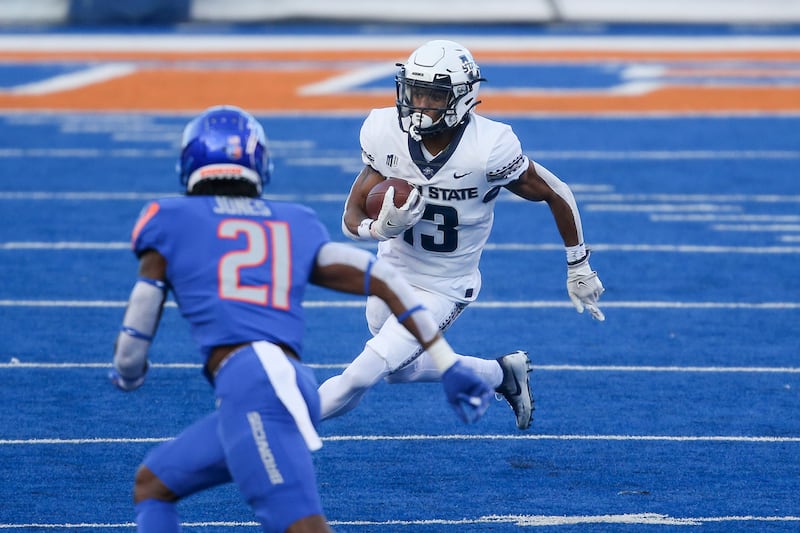
The rebuild is in full swing at Utah State, whether the Aggies want it to be or not
Utah State didn’t play over the weekend, after the rivalry game against Wyoming was canceled due to an “upward trend” of positive COVID-19 cases within the Aggies’ program.
The unexpected bye, in theory, gave the team a chance to regroup after a dismal 0-4 start. The off week proved anything but a quiet reprieve, however.
Over the course of three days — Thursday, Friday and Saturday — three USU starters entered the transfer portal.
One by one by one, safety Troy Lefeged Jr., wide receiver Deven Thompkins and hybrid linebacker/safety Cash Gilliam all decided to leave Logan.
Lefeged Jr. was one of the team’s best defenders, although a season-ending injury meant his year was already done, but Thompkins was the Aggies’ most effective offensive weapon not named Jaylen Warren and Gilliam had seamlessly moved from safety to linebacker and become a key contributor.
Throw in last Sunday’s dismissal of quarterback Jason Shelley and USU lost four starters in under a week’s time.
USU had already embraced a youth movement this season, by necessity. Utah State is the 13th-youngest team in the nation, with 65.4% of its roster made up of freshmen and sophomores. The Aggies have had 16 players make the first starts of their careers this year, and 23 players have made their debut with the team.
Still, with the loss of four key veterans, and the very real possibility of more to follow, the rebuild is on to an accelerated degree in Logan.
In a Saturday morning tweet, interim head coach Frank Maile tweeted how grateful he is for adversity and the growth it spurs.
His sentiment, as inspiring as it might be, will continue to be put to the test over the next three weeks.
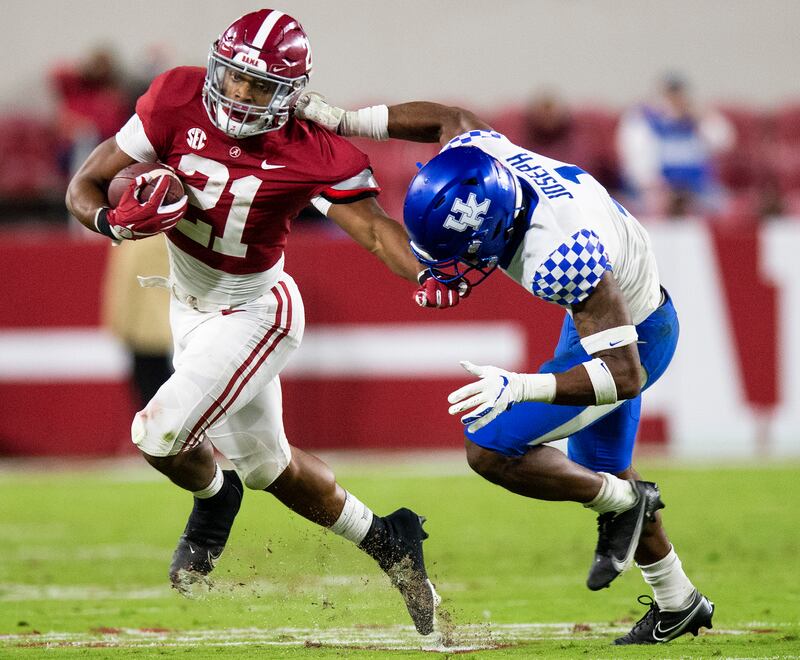
College football’s postseason should embrace crazy
The 2020 season has been anything but normal. Some teams have played nine or 10 games, while others have played only one or two. Bye weeks often seem to turn into bye months (seriously, Clemson quarterback Trevor Lawrence hasn’t played in a month), and the list of undefeated teams includes Alabama, Ohio State, Notre Dame and USC, but also Coastal Carolina, BYU, Marshall and Northwestern.
For all the strangeness there has been, the powers that be remain steadfast in their desire for a normal four-team college football playoff.
Earlier in the week, Bill Hancock, the executive director of the CFP, told ESPN’s Heather Dinich that there are no plans to pause the playoffs and there won’t be replacement teams if COVID-19 outbreaks occur. Basically, the College Football Playoff will go on as scheduled, because plans of any kind have worked out so well this year.
Instead of going forward as planned, college football should use this season as an opportunity to be crazy when it comes to the postseason.
After all, what honest person can truly say they know which four teams are the best in the country this year? There has not been anything close to resembling a level playing field across the sport. In a year like 2020, the norm won’t work, so here some crazy alternatives:
- Drop the CFP and the committee altogether (just for a season, calm down) and return to the BCS. Maybe it would still favor the SEC (for as much hate as the BCS received at the end, it did give us Miami-Ohio State, Texas-USC, Boise State-Oklahoma, TCU-Wisconsin and the list goes on), but at the very least there’d only be one game that would need to be played to determine a national champion, rather than three.
- Want a more ridiculous suggestion? The national championship matchup could be a simple popularity contest. Fan attendance has been limited all season long, so why not let the country decide what game it wants to watch on TV the most. We’ve all proven fantastic at elections, so what is one more vote?
- Instead of eliminating the playoffs, go bigger. All FBS conference champions get in, there are byes for top-Power Five champs, with a few at-large teams included. Underdogs get a shot and likely get blown out, but there would be an even playing field for everyone who makes it into the postseason.
- Another option is to go back in time further than the BCS and let the voters decide the national champion. There is no guarantee a playoff could be pulled off, so why not let 100-plus people examine resumes, storylines and the like and decide the champion, rather than just 12.

